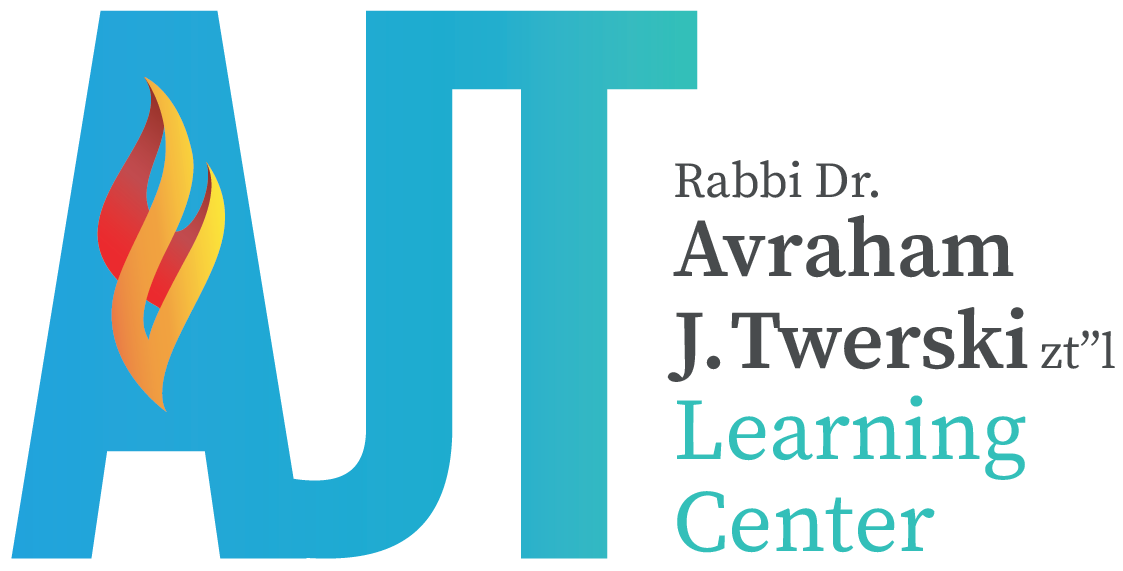ABOUT RABBI TWERSKI
ABOUT RABBI DR. AVRAHAM J. TWERSKI ZT”L
"
Rabbi Twerski was a prolific writer of Jewish books, shiurim and 90 books on a broad array of mental health topics including addictions, self-esteem, personal growth and parenting. Perhaps less known, he composed a melody for the Hebrew verse Psalms 28:9 "Hoshea es Amecha," which became popular in the Jewish world
"
Abraham Joshua Twerski was born in Milwaukee, Wisconsin. His parents were Devorah Leah (née Halberstam; 1900–1995), daughter of the second Rebbe of Bobov, and Rabbi Jacob Israel Twerski (1898–1973), who was the Rabbi of Beth Jehudah synagogue in Milwaukee. and a descendant of Rabbi Menachem Nachum Twerski, the founder of the Chernobyl Hasidic dynasty, and a student of the Baal Shem Tov.
He enrolled in the Hebrew Theological College of Chicago and was ordained a rabbi in 1951. He worked with his father as assistant rabbi until 1959. In 1952 he married Goldie Flusberg. In 1953 Twerski enrolled at Milwaukee’s Marquette University, and subsequently graduated from its medical school in 1960. He received his psychiatric training at the University of Pittsburgh and spent an additional two years on the staff of a state hospital in Pennsylvania. He was then asked to become the department head of psychiatry at Pittsburgh’s St. Francis Hospital.
Rabbi Twerski’s founded the Gateway Rehabilitation Center in Pittsburgh, for which he served as medical director emeritus. He was clinical director of the Department of Psychiatry at St. Francis Hospital in Pittsburgh, associate professor of psychiatry at the University of Pittsburgh’s School of Medicine, and founder of the Shaar Hatikvah rehabilitation center for prisoners in Israel.
Rabbi Twerski was a prolific writer of Jewish books, shiurim and 90 books on a broad array of mental health topics including addictions, self-esteem, personal growth and parenting. Perhaps less known, he composed a melody for the Hebrew verse Psalms 28:9 “Hoshea es Amecha,” which became popular in the Jewish world. The song became especially popular in the Lubavitch community, after the Lubavitcher Rebbe sang it at a farbrengen. In his will he specified that he did not want there to be eulogies at his funeral, but rather, for his children to sing the song he composed, “Hoshea es Amecha”, as they led him to his final resting place.
He was attracted by the pragmatism of the Twelve Steps – the AA system which offered a practical non-analytic therapy that resonated with traditional Judaism much more than conventional psychoanalysis did. In treating addicts, Rabbi Twerski discovered limitations of the psychoanalytic emphasis on understanding the origins of one’s behavior. Patients would continue to drink while they inquired with their therapists into the possible reasons for their drinking. The Twelve Step program took the opposite approach, demanding that the person start his or her transformation by stopping the bad behavior. Rabbi Twerski realized that “there is an important similarity between the Torah approach to behavior and the Twelve Step program approach.”
Rabbi A.J. Twerski retired from full-time work in 1995, and moved to Monsey, New York, where his second wife, Gail was from. After about ten years in Monsey, they moved to Teaneck, New Jersey. Rabbi Twerski finally moved to Jerusalem, Israel with his wife, and called for his fellow Jews to do the same. Rabbi Twerski was the stepfather-in-law of Rabbi Daniel Myers, the rabbi of Menorat Hamaor in Ramat Beit Shemesh. Rabbi Twerski visited Menorat Hamaor frequently for Shabbat close to 20 years, gave lectures and shiurim at the shul, held a Tisch at the Myers’ home and davened Neilah at the end of Yom Kippur every year at Menorat Hamaor. The connection between Rabbi Twerski and Menorat Hamaor was powerful. After his passing, the Beit Knesset decided to create something meaningful and impactful to perpetuate his memory and teachings, and created the Rabbi Dr. Avraham J. Twerski zt”l Learning Center.
"
The Twelve Step program took the opposite approach, demanding that the person start his or her transformation by stopping the bad behavior. Rabbi Twerski realized that "there is an important similarity between the Torah approach to behavior and the Twelve Step program approach.”
"
(Modified from Wikipedia, https://en.wikipedia.org/wiki/Abraham_J._Twerski)


